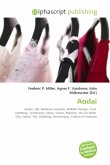Hergé started drawing his comics series The Adventures of Tintin in 1929 for Le Petit Vingtième, the children's section of the Belgian newspaper Le Vingtième Siècle, run by the abbot Norbert Wallez, an avid supporter of social Catholicism, a right- wing movement. During World War II, Tintin appeared in the Brussels daily pro-German Le Soir; after the war he appeared in his own magazine, Tintin (founded by a member of the Resistance, Raymond Leblanc) until Hergé's death in 1983. As a young artist Hergé was influenced by his mentors, specifically the abbot Norbert Wallez, who encouraged Hergé to use Tintin as a tool for Catholic propaganda to influence Belgian children. This shows in his earlier works within the Tintin series. As a result, European right-wing stereotypes pervade Hergé's early catalogue. A breakthrough came in 1934, when the cartoonist was introduced to Zhang Chongren, a Chinese student, who explained Chinese politics, culture, language, art, and philosophy to him, which Hergé used to great effect in The Blue Lotus.
Bitte wählen Sie Ihr Anliegen aus.
Rechnungen
Retourenschein anfordern
Bestellstatus
Storno








